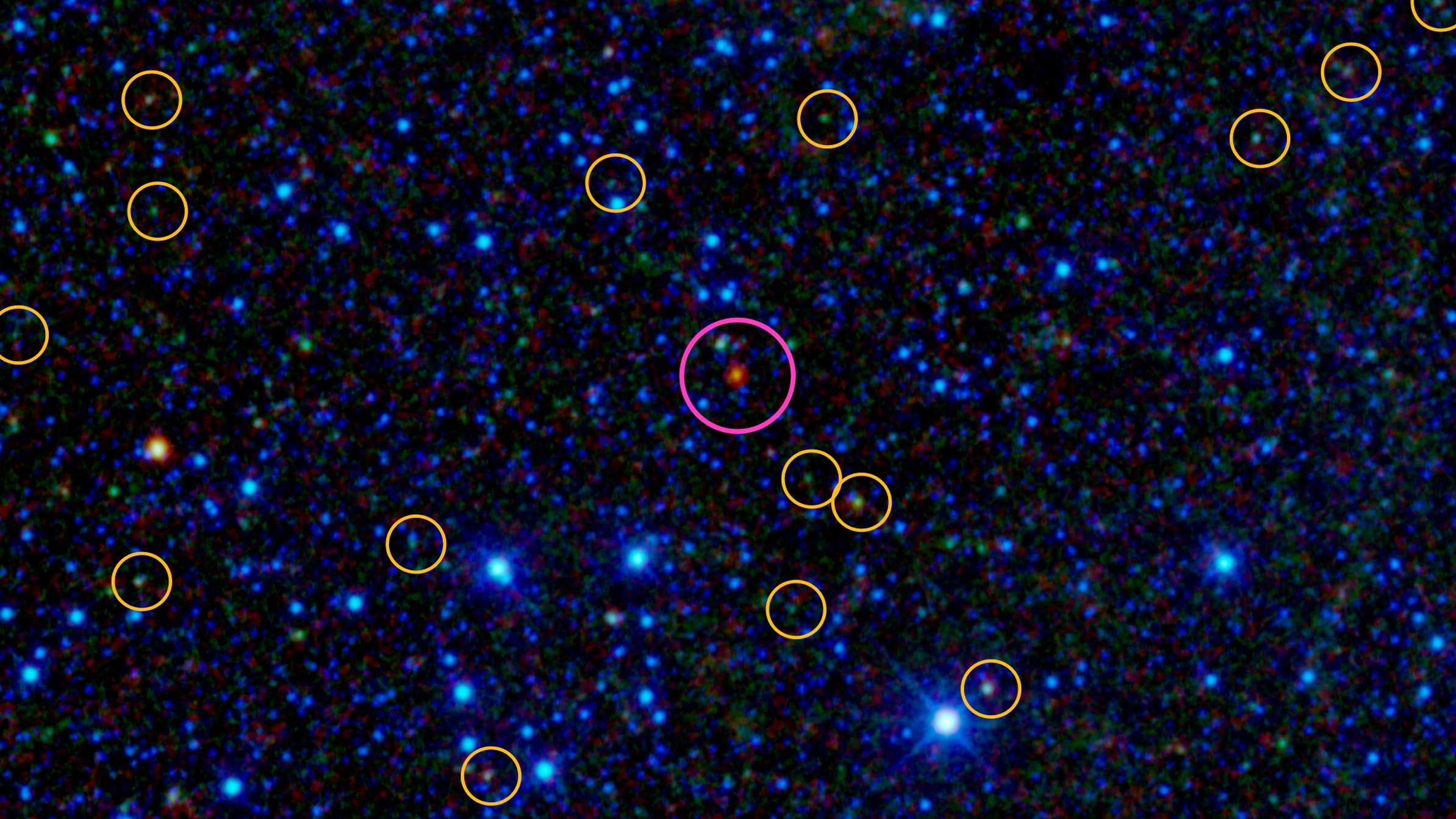7 potential 'alien megastructures' spotted in our galaxy are not what they seem
Scientists recently identified seven stars in the Milky Way that could potentially be gigantic alien structures called Dyson spheres. New research proposes an alternative explanation: Those are just cosmic "hot DOGs" in disguise.

A team of astronomers combed through a collection of odd stars that are candidates for Dyson spheres — artificial constructs designed by aliens to leech energy from stars. Instead, the scientists found, the weird stars are more likely to be "hot DOGs" — hot dust-obscured galaxies.
In early 2024, astronomers combed through more than 5 million stars from the Wide-field Infrared Survey Explorer, Gaia and 2MASS sky surveys, searching for stars that seemed to have excess infrared radiation. According to the researchers, this extra infrared signal could be interpreted as the signature of a Dyson sphere.
First proposed in the 1960s by physicist Freeman Dyson, these hypothetical constructs would essentially be enormous shells that wrap around stars, absorbing as much light energy as possible. In Dyson's theory, the material used to construct these spheres would come from disassembled planets in that star's system.
Alien civilizations could use Dyson spheres to acquire millions of times more solar energy than we have access to on Earth while also giving themselves a spiffy new structure to live on. But no energy collection or usage system is perfect. So, while the Dyson sphere collects radiation from the star on its inside, it also emits heat from its outside.
To us, that would make a Dyson sphere appear as a star with a lot more infrared radiation than normal. In the latest search, the astronomers identified seven stars within 1,000 light-years of Earth that emit an abnormally large amount of infrared radiation, making them Dyson sphere candidates.
Related: 32 strange places scientists are looking for aliens
But in a more recent study published to the preprint server arXiv in May, a new team of astronomers examined those seven candidates in greater detail. They found that three are very close to a peculiar kind of galaxy known as a hot dust-obscured galaxy, or "Hot DOG."
Get the world’s most fascinating discoveries delivered straight to your inbox.
Hot DOGs are surrounded by enormous, thick clouds of dust, and warm dust is very good at emitting infrared radiation. Therefore, the astronomers propose that for these three candidates, the excess infrared radiation isn't due to the star itself but rather our view through the warm dust surrounding a Hot DOG.
As for the other four stars? The researchers argue that because of the similarities in the various wavelengths of light emitted by all seven candidates, these stars are likely obscured by hot DOGs as well, even though we don't have detailed enough observations in those directions to conclusively find the culprits.
While this new research doesn't completely throw a wet blanket on the idea of advanced alien civilizations turning their planets inside out, it doesn't help the overall search for extraterrestrial intelligence. But it does show just how intricate astronomy can be and how simple chance alignments can lead to surprising results. Importantly, it demonstrates that if we do ever find more conclusive evidence for aliens, we're going to have to work hard to prove they're not just cosmic Hot DOGs.

Paul M. Sutter is a research professor in astrophysics at SUNY Stony Brook University and the Flatiron Institute in New York City. He regularly appears on TV and podcasts, including "Ask a Spaceman." He is the author of two books, "Your Place in the Universe" and "How to Die in Space," and is a regular contributor to Space.com, Live Science, and more. Paul received his PhD in Physics from the University of Illinois at Urbana-Champaign in 2011, and spent three years at the Paris Institute of Astrophysics, followed by a research fellowship in Trieste, Italy.


